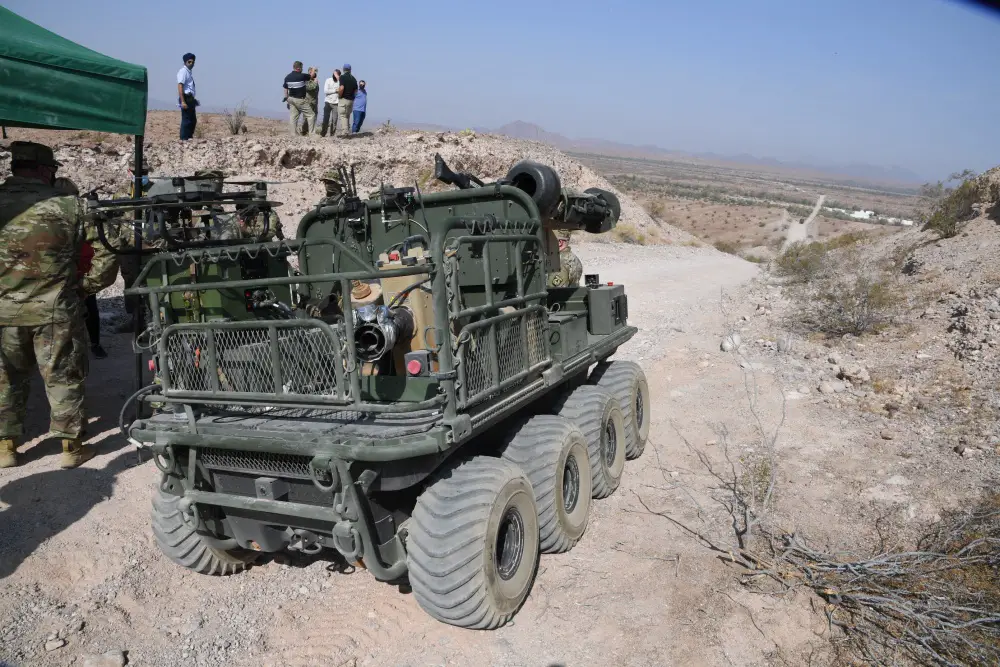During Project Convergence 20, the U.S. Army Futures Command’s capstone exercise of an ambitious project of learning, multiple examples of the most cutting-edge military technology were put through their paces on Yuma Proving Ground’s (YPG) vast ranges. In addition to its usefulness for lugging heavy gear, or even wounded Soldiers, an armed variant is outfitted with a Javelin anti-tank missile, a .50 caliber machine gun, and a M4 rifle. One of the most rugged was the Multi-Utility Tactical Transport (MUTT), an 8 x 8 unmanned all-terrain vehicle that will follow a dismounted infantry Soldier carrying a wireless tether.
The testing at YPG across six weeks of Project Convergence’s capstone exercise subjected all of the systems to the most intense weather and terrain conditions the Sonoran Desert had to offer, and then some: Yuma experienced nine days of record-breaking heat across the time the demonstration was in progress. The MUTT was put through its paces across rugged, steep, unimproved desert roads and trails fully exposed to the elements as evaluators collected performance data.
Perhaps the most interesting payload being evaluated was a tethered unmanned aerial system that can ascend 200 feet above the MUTT and serve a variety of purposes, including use as an electronic signal repeater. The MUTT can also be outfitted with other payloads: a screening obscuring module that delivers a smoke screen, chemical and biological agent detectors, and an ultra-low light night vision camera that produces full color images. Dismounted Soldiers can only carry what’s on their back—now they have a ‘mule’ that can carry much heavier equipment, but that’s still small enough to not restrict their mobility in tight areas.
Each MUTT is expected to be able to carry 1,000 pounds, operate for 60 miles in 72 hours, and run silently in the field to avoid detection by an adversary, all while being able to recharge Soldiers’ peripheral electronic gear like radios and night vision goggles with onboard power. YPG’s natural environment testing ensures this vital piece of equipment will work as expected wherever in the world it is called upon to serve. It can be used for reconnaissance, surveillance, or assessments of battle damage.
















